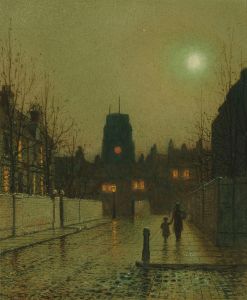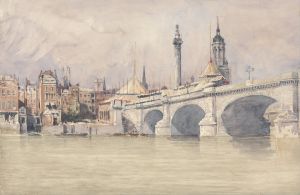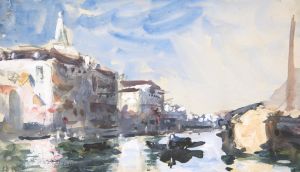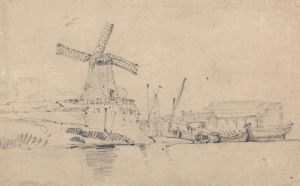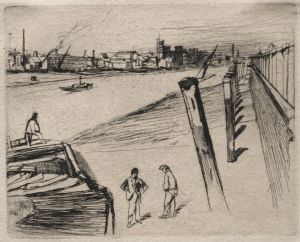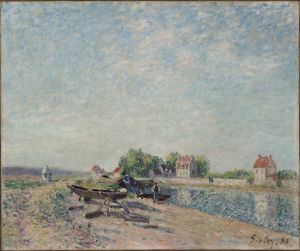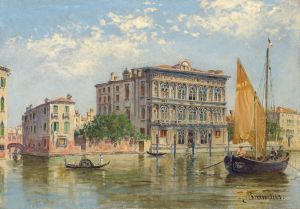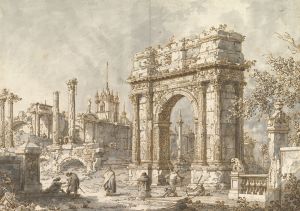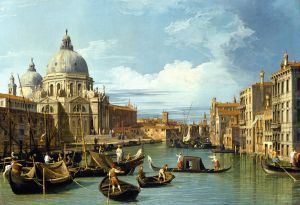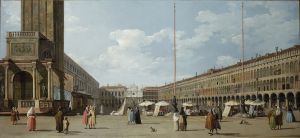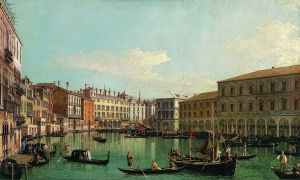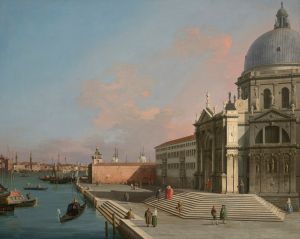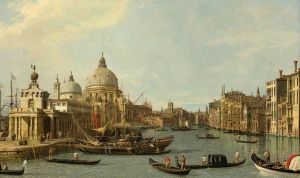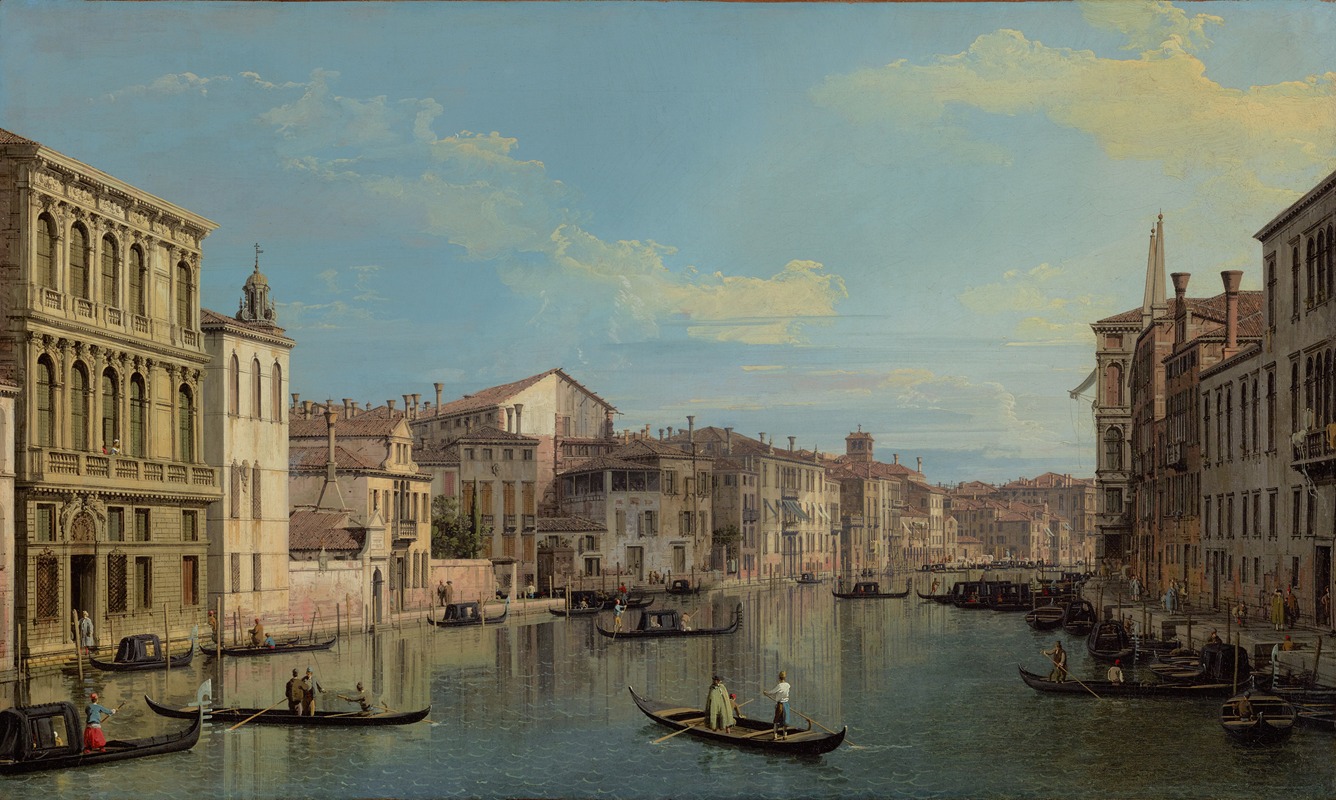
The Grand Canal in Venice from Palazzo Flangini to Campo San Marcuola
A hand-painted replica of Canaletto’s masterpiece The Grand Canal in Venice from Palazzo Flangini to Campo San Marcuola, meticulously crafted by professional artists to capture the true essence of the original. Each piece is created with museum-quality canvas and rare mineral pigments, carefully painted by experienced artists with delicate brushstrokes and rich, layered colors to perfectly recreate the texture of the original artwork. Unlike machine-printed reproductions, this hand-painted version brings the painting to life, infused with the artist’s emotions and skill in every stroke. Whether for personal collection or home decoration, it instantly elevates the artistic atmosphere of any space.
"The Grand Canal in Venice from Palazzo Flangini to Campo San Marcuola" is a renowned painting by the Italian artist Giovanni Antonio Canal, better known as Canaletto. This artwork is a prime example of Canaletto's mastery in capturing the grandeur and intricate details of Venice's iconic waterways and architecture. Painted in the early 18th century, this piece is part of Canaletto's extensive series of vedute, or cityscapes, which depict various views of Venice.
Canaletto was born in Venice in 1697 and became one of the most celebrated landscape painters of his time. His works are characterized by their precise and detailed representation of architectural elements, as well as their vibrant use of light and color. Canaletto's paintings were highly sought after by collectors, particularly British aristocrats who were fascinated by the beauty and culture of Venice.
"The Grand Canal in Venice from Palazzo Flangini to Campo San Marcuola" showcases a bustling scene along the Grand Canal, one of Venice's most important and picturesque waterways. The painting captures a view looking towards the east, with the imposing Palazzo Flangini on the left and the church of San Marcuola in the distance. The Grand Canal is filled with various types of boats, including gondolas and larger vessels, which were essential for transportation and commerce in Venice.
Palazzo Flangini, a notable structure in the painting, was built in the 17th century and is an excellent example of Venetian Baroque architecture. Its grand façade and intricate details are meticulously rendered by Canaletto, demonstrating his skill in depicting architectural features. The church of San Marcuola, visible in the background, adds to the depth and perspective of the scene. This church, dedicated to Saints Hermagoras and Fortunatus, was originally constructed in the 12th century and later rebuilt in the 18th century.
Canaletto's use of light and shadow in this painting is particularly striking. The sunlight illuminates the buildings and the water, creating reflections that enhance the sense of realism. The artist's attention to detail is evident in the depiction of the various activities taking place along the canal, from merchants conducting business to gondoliers navigating the waters.
This painting not only serves as a beautiful representation of Venice but also provides valuable insight into the daily life and architecture of the city during the 18th century. Canaletto's works, including this one, were instrumental in shaping the European perception of Venice as a city of unparalleled beauty and cultural significance.
Today, "The Grand Canal in Venice from Palazzo Flangini to Campo San Marcuola" is held in the collection of the Royal Collection Trust, a testament to its enduring value and importance. The painting continues to be admired for its artistic excellence and historical significance, offering viewers a glimpse into the splendor of Venice through the eyes of one of its most talented artists.





